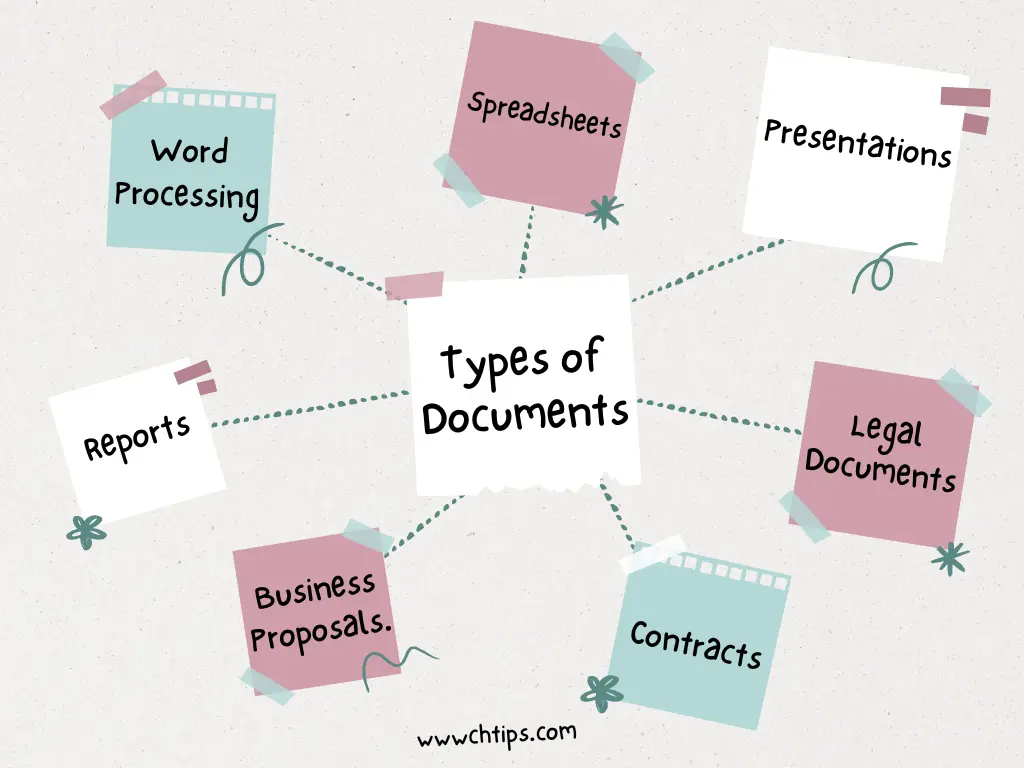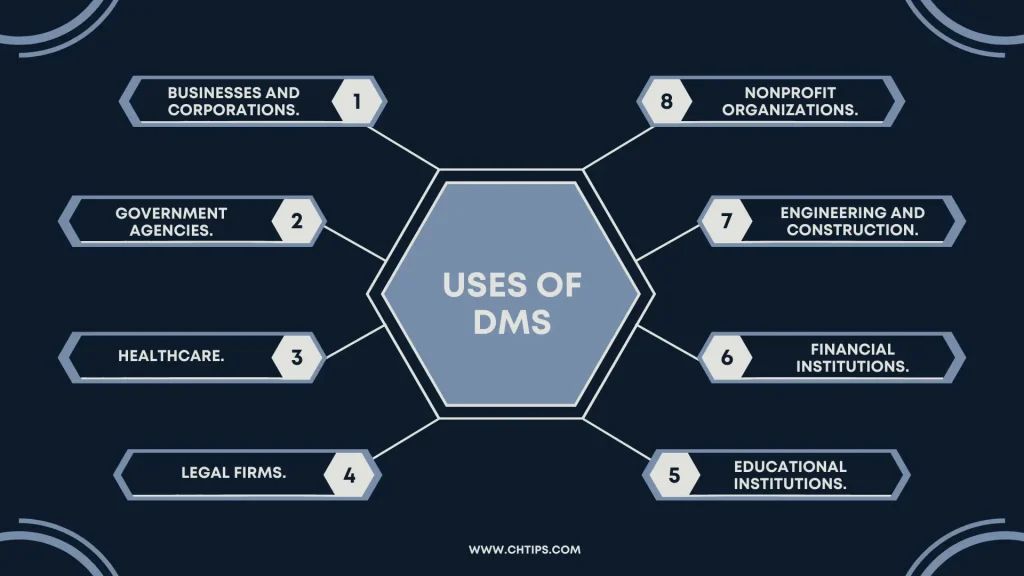Introduction to Document Management System
A Document Management System [DMS] is software designed and developed to store, organize, manage, and track electronic documents and information.
It provides a centralized system for storing and retrieving documents, making it easier to manage large volumes of digital files and streamline document-related processes.
Document management systems have several significant advantages and benefits, such as efficiency, productivity, and collaboration, by eliminating manual document handling, reducing paperwork, and enhancing document search and retrieval.
The benefits of using a DMS include enhanced collaboration, increased productivity, reduced storage costs, faster search, speedy retrieval of information, and enhanced security features.
Let us discuss some significant Benefits of Document Management System.
What is Document Management System?
The Document Control System is a set of processes designed and developed to facilitate and streamline the management of documents within an organization.
It also provides a centralized and structured approach to create, control, track, and distribute documents throughout their lifecycle.
A Document Control System typically includes the following features:
- Document Creation.
- Document Versioning and Revision Control.
- Document Approval Workflow.
- Document Storage and Organization.
- Document Retrieval and Search.
- Document Distribution and Access Control.
- Document Audit Trail and Tracking.
- Document Archiving and Retention.
- Security and Permissions.
What is an Examples of a Document Management System?
Document management system examples include Microsoft SharePoint and Amazon WorkDocs.
3 Functions of a Document Management System?
Three main functions of a document management system — to capture, store and distribute documents.
What is Document Control in QMS?
There are some aspects of Document Control in QMS.
- Document Identification and Classification.
- Document Creation and Approval.
- Document Distribution and Accessibility.
- Version Control and Revision Management.
- Document Retrieval and Obsolescence.
- Change Control and Document Review.
- Document Training and Awareness.
7 Types of Documents?
- Word Processing Documents.
- Spreadsheets.
- Presentations.
- Reports.
- Business Proposals.
- Contracts.
- Legal Documents.

15+ Advantages and Benefits of Document Management System in Points
Using and implementing a document management system [DMS] can provide various significant advantages & benefits for nonprofit organizations.
Below I have mentioned some 15+ advantages and benefits of using a document management system DMS.
- Enhanced Document Organization.
- Improved Collaboration.
- Increased Efficiency.
- Enhanced and improved Security.
- Disaster Recovery and Backup.
- Regulatory Compliance.
- Improved Accessibility.
- Efficient Document Retrieval.
- Cost Savings.
- Easy Document Sharing.
- Version Control and Document History.
- Workflow Automation.
- Scalability.
- Integration with Other Systems.
- Data Analytics and Reporting.
1. Enhanced Document Organization.
The document management system [DMS] allows nonprofits to store, handle, and categorize documents in an organized and structured manner.
This makes it simple and easier to find, locate and retrieve information whenever needed or required by the user.
2. Improved Collaboration.
Using and utilizing a document management system [DMS], one can work in a group or can collaborate with a team that can share data and information.
Also, work can be done in real-time, enabling simultaneous editing, commenting and version control, which enhances teamwork and productivity.
3. Increased Efficiency.
The automatic process can significantly reduce the time taken to complete a task manually; a DMS helps nonprofits save time, effort and resources.
These can prevent wastage of time, and one can concentrate on the task simultaneously.
4. Enhanced Security.
Document Management Systems provides an additional layer of security features with silent characteristics.
Some features are access controls, encryption, and audit trails, ensuring that sensitive nonprofit data is protected from unauthorized access or loss.
5. Disaster Recovery and Backup.
Document Management Systems [DMS] solutions offer services like backup and disaster recovery features and characteristics such as safeguarding important documents from accidental deletion, hardware failures, or natural disasters.
6. Regulatory Compliance.
Nonprofits must obey and follow numerous rules, regulations, and compliance standards. A DMS can assist by maintaining document versioning, audit trails, and retention policies, ensuring compliance with legal requirements.
7. Improved and Enhanced Accessibility.
Document Management Systems [DMS] solutions are versatile and can be used and accessed document from anywhere at our convenience.
Users can easily access files and documents from any location, irrespective of their location.
8. Efficient Document Retrieval.
In Document Management Systems [DMS], file and document access are faster and more accurate than manual work.
Advanced search parameters, meta-tagging, and filters significantly improve search results.
9. Cost Savings & Inexpensive.
A Document Management System [DMS] do not require physical data and information storage space, reduced consumption of papers, printing costs, and maintenance expenses; this results in cost saving for nonprofits.
10. Easy Document Sharing.
A DMS facilitates secure and enhanced document sharing, reducing the reliance on email attachments and ensuring data privacy.
11. Version Control and Document History.
DMS solutions maintain a history of document changes, allowing nonprofits to track revisions, revert to previous versions, and ensure that the most up-to-date information is being used.
12. Workflow Automation.
Automating document-centric workflows, such as approvals, review cycles, and notifications, improves efficiency, reduces errors, and ensures consistency across processes within the nonprofit organization.
13. Scalability.
A DMS is capable of scaling the volumes of documents when increased dramatically. Handing and filtering additional and excess files | documents without drastic infrastructure changes and upgradation.
14. Integration with Other Systems.
Many DMS platforms integrate seamlessly with other software systems commonly used by nonprofits, such as customer relationship management (CRM) tools, fundraising platforms, or accounting software, enabling a cohesive workflow.
15. Data Analytics and Reporting.
Some advanced DMS solutions offer analytics and reporting capabilities, providing insights into document usage patterns, user behaviours, and productivity metrics, enabling nonprofits to make data-driven decisions.
By leveraging a document management system, nonprofits can streamline their document processes, improve collaboration, ensure compliance, and enhance productivity, ultimately supporting their mission and impact.
Applications of a Document Management System
A Document Management System [DMS] is significantly and widely used in various private and government industries and organizations
Below I have listed some typical applications of a DMS
- Centralized Document Storage.
- Document Retrieval.
- Version Control.
- Workflow Automation.
- Collaboration and sharing.
- Document Security and Access Control.
- Compliance and Regulatory Requirements.
- Document Archiving and Retention.
- Mobile Access.
- Integration with Other Systems.
- Document Scanning and OCR.
- Document Analytics and Reporting.
- Regulatory Audits and Legal Discovery.
- Document Collaboration with External Parties.
- Records Management.
The above applications have valuable characteristics and features for implementing an organization’s document management system.
Where is Document Management System Used?
A Document Management System [DMS] is used and utilized where a large volume of data and information is needed for speed and accuracy.
DMS is also used in various industries and organizations.
Some of such sectors I have mentioned below have a look.
- Businesses and Corporations.
- Government Agencies.
- Healthcare.
- Legal Firms.
- Educational Institutions.
- Financial Institutions.
- Engineering and Construction.
- Nonprofit Organizations.
- Research Institutions.

1. Businesses and Corporations.
Document Management System [DMS] is extensively used in business where data and information are stored in all sizes.
It helps improve document retrieval, collaboration, version control, and Security.
2. Government Agencies.
Government organizations and agencies use data and information such as legislation, public records, permits, licenses, and administrative processes.
With the help of DMS, the data is handled more efficiently when done manually.
3. Healthcare.
Document Management System [DMS] is used in the healthcare industry to manage patient records, medical histories, test results, and other documents.
4. Legal Firms.
Law firms and legal departments heavily rely on DMS for organizing case files, contracts, legal documents, and correspondence.
5. Educational Institutions.
Schools, colleges, and universities use DMS for managing student records, academic documents, research papers, and administrative files.
6. Financial Institutions.
Banks, insurance companies and financial institutions used to store and handle customer information, their sensitive information, account statements, loan documents, and regulatory filings.
7. Engineering and Construction.
DMS is utilized in engineering and construction firms to manage project plans, specifications, blueprints, and documentation related to construction projects.
8. Nonprofit Organizations.
Nonprofits use DMS to handle donor records, grant applications, fundraising documents, and compliance-related paperwork.
9. Research Institutions.
Research organizations, laboratories, and scientific institutions employ DMS to organize research papers, experiment results, patents, and intellectual property documents.
Recommended Reading
- Knowledge Management vs Document Management
- Differences Between Typewriter and Computer keyboard
- Machine Learning Vs Computer Vision
- Difference Between Ecommerce and Woocommerce
- Differences Between General Purpose Computers and Special Purpose Computers
- 5 Differences Between BIOS Bin and BIOS Exe
- 10+ Differences Between Fixed And Removable Disk Drives
- Differences Between Thermal Printers and Dot Matrix Printers
- Differences Between Personal Computers and Mobile Devices
- 11+ Differences Between Optical Disk and Hard Disk
- 8+ Differences Between Multi-Programming OS and Time Sharing OS
- Differences Between HTML and WML- HTML VS WML
- Differences Between Binary Code Decimal and Binary Number System
- 11+ Differences Between OCR and ICR [OCR Vs ICR]
- Document Control Vs Document Management | 10+ Differences
- Smart Search Document Management System
- Computer Basic Tutorials
Document Management System for Nonprofits
Document Management Systems (DMS) can be highly beneficial to nonprofit organizations in managing their document-related needs; the data and information can also be retrieved whenever needed or required.
Here I have mentioned the benefits of Document Management Systems for nonprofits.
- Donor Management.
- Grant Management.
- Board and Committee Collaboration.
- Policies and Procedures.
- Volunteer Management.
- Compliance and Legal Documents.
- Collaboration and Document Sharing.
- Data Security and Privacy.
Useful Video: Benefits of Document Management Systems for Nonprofits.
Benefits of Document Management System For Nonprofit PDF Download
What are 5 Examples of File Management?
- eFileCabinet.
- Microsoft OneDrive.
- Dropbox.
- Apple iCloud.
- Google Drive.
Frequently Asked Questions [FAQs] On Document Management System
What are the two types of documentation systems?
Product and process documentation.
What are the 4 types of documents?
The four kinds of documentation are:
Learning-oriented tutorials.
Goal-oriented how-to guides.
Understanding-oriented discussions.
Information-oriented reference material.
What are the 4 types of files?
JPEG.
PNG.
GIF.
PDF.
SVG.
What are the 5 types of document views?
Print Layout, Full-Screen Reading, Web Layout, Outline and Draft.
Is SAP a document management system?
It is an advanced document management system.
What are the types of benefits management?
2 types of benefits management, they are tangible and intangible.
Get In Touch
I have also written and compiled some articles on computers and telecommunications, and please go through them.
I hope you will like reading it.
All the questions and queries related to the Benefits of a Document Management System for Nonprofits, with examples and images, have been answered here.
If you have any questions related to Document Management System for Nonprofit.
Don’t hesitate to contact me, and if you need to add, remove or update anything from the article, please let me know in the comment section or via email.
I will be more than happy to update the article. I am always ready to correct myself.
Please share this article with your friends and colleagues; this motivates me to write more on related topics.
!!! Thank You !!
Comments are closed.